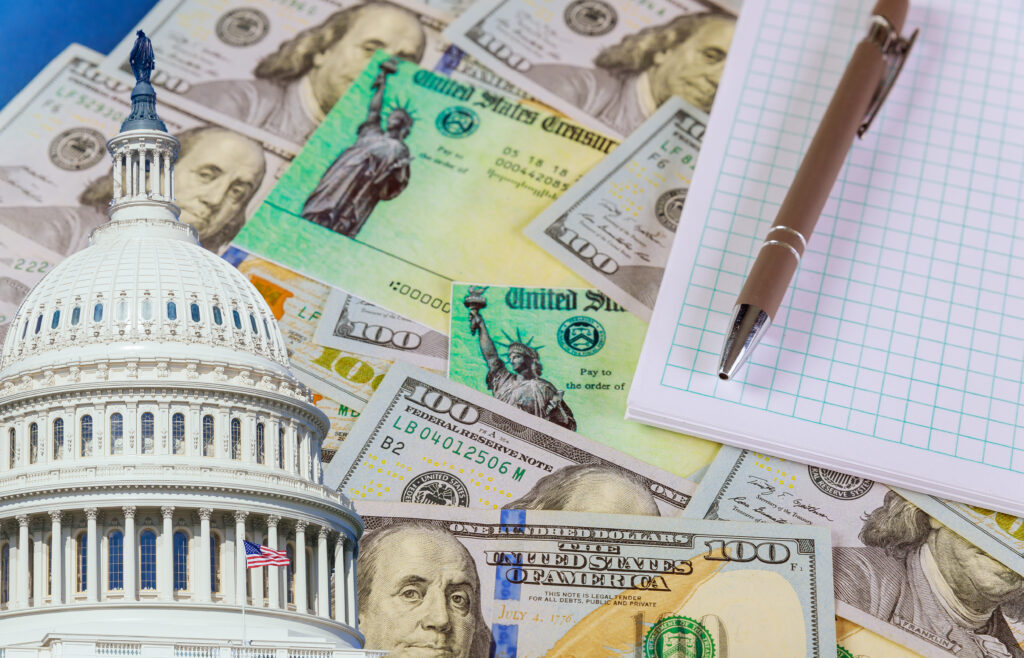Download National and State-by-State Data
A new ITEP report finds that the combination of tax changes in the Build Back Better bill recently approved by the House Ways and Means Committee would result in a tax cut for the average taxpayer in all income groups except the richest 5 percent.
The effects of the policy changes vary a great deal depending on each household’s circumstances, so not all taxpayers in the bottom 95 percent would receive a tax cut. For example, those who do not have children and are not working would not benefit from the biggest tax cuts in the bill, the expansion of the Child Tax Credit (CTC) and Earned Income Tax Credit (EITC). But, overall, the bill would make the tax system much more progressive than it is today.
This could change if lawmakers modify the bill before it goes before the full House for a vote. For example, if the bill is amended to repeal the cap on deductions for state and local taxes (SALT), the overall effects would not be nearly as progressive as those illustrated by this report. The report examines the effects of the bill in 2022, the first year it would be in effect if enacted.
The most significant tax increases in the Ways and Means bill fall into three categories. The first are provisions that increase income taxes for individuals. These would affect just 1.6 percent of taxpayers next year, and 97 percent of these tax increases would be paid by the richest 1 percent.
The second category of tax increases in the bill would raise taxes on corporations. These corporate tax increases would indirectly affect individuals who own corporate stocks and other business assets, most of which are owned by wealthy Americans and foreign investors who would, therefore, ultimately pay (indirectly) most of the corporate tax increases. The third category of tax increases would raise federal taxes on tobacco and nicotine, which could affect people in all income groups.
In all but the top income groups, these tax increases are more than offset for the average taxpayer by the bill’s biggest tax cuts, which are expansions of the CTC and EITC. The graph above illustrates the combined effects of the proposed tax changes for each income group as a share of before-tax income.
The graph shows, for example, that the poorest 20 percent on average would receive a tax cut equal to 10 percent of their income, meaning the bill would essentially boost their income by a tenth. Again, this does not mean that everyone among the poorest 20 percent would receive this tax cut. (For example, someone who is retired and has no children and no earnings would not benefit from either the CTC expansion or the EITC expansion.)
The graph above also shows that the richest 1 percent would receive, on average, a tax increase equal to 4.5 percent of their income.
The graph below breaks down these changes into the three categories of tax increases plus a fourth category made up of the biggest tax cuts (the CTC expansion and EITC expansion).
The tax cuts in the Ways and Means bill would be bigger than is shown in the ITEP report. We included the two largest tax cuts in the bill, which account for 63 percent of the tax cuts during the first five years that the bill would be in effect according to Congress’s official revenue estimator, the Joint Committee on Taxation (JCT). This means taxpayers would receive more tax cuts than we can illustrate in our estimates. (In comparison, we were able to include tax increases accounting for 94 percent of the revenue that would be raised during the first ten years the bill would be in effect.)
The graph below provides the total tax change in 2022 that would be paid under the bill by different groups in billions of dollars. In addition to U.S. residents in each income group, it shows that foreign investors would pay a significant share of the tax increases in 2022.
Key conclusions of this report include:
- If this bill is enacted, only those among the top 5 percent would face a tax increase in the individual income taxes they file each year in April.
- The bill’s corporate tax increases could indirectly affect people in all income groups, but the effects would be concentrated among wealthy Americans and foreign investors, as the report explains in more detail.
- The tobacco and nicotine tax increases would affect people at all income levels.
- The bill’s expansions of the Child Tax Credit and Earned Income Tax Credit would provide benefits mostly to the bottom 60 percent of taxpayers and would result in most income groups overall paying less in federal taxes than they do today, even in combination with the tax increases examined in this report.
Read the full report for more details.





